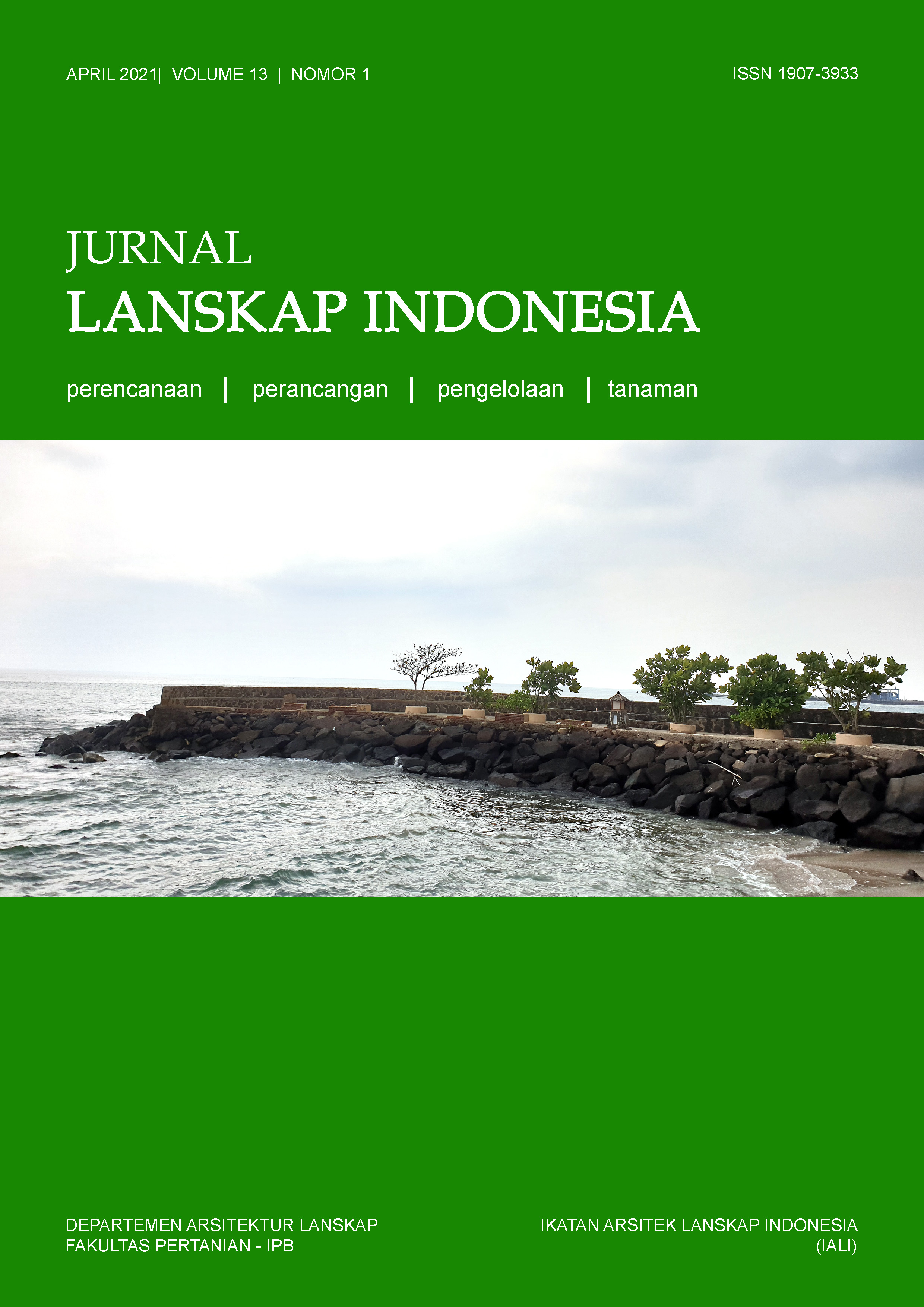Pengaruh Jarak terhadap Persepsi Sehat Penghuni Perumahan Kecamatan Tebet Jakarta Selatan
Abstract
The poor environmental conditions in Jakarta indicate that housing residents are not healthy, therefor the need for green open spaces that are close to housing is very important. The purpose of this study is to determine the effect of green open space on the health perceptions of housing residents. The research method used is descriptive quantitative with primary data collection stages; limiting the distance of the research location area within a radius of 1-3 km; perform multiple linear regression analysis and cross-tabulation. The results of this study indicate that the negative coefficient is not unidirectional; the adolescent and elderly age group had a good healthy perception, reaches 42.7%; male gender showed a good healthy perception 35.4%; Housing residents who do not work have a healthy perception of 33.3%. The perception of health decreases with increasing distance and is increasingly visible in residents who live within 1-3 km of green open space. This research serves as input to related agencies that the minimum distance of green open space to housing is 300-1000 m because it is important to provide good health effects for housing residents.
Downloads
References
Ekkel, E.D., and de Vries, S. 2017. Nearby green space and human health: Evaluating accessibility metrics. Landscape and urban planning, 157, 214-220.
Jesica, J., Kaswanto, R.L., and Arifin, H.S. 2019. Management of “Pekarangan” in Informal Settlement of Ciliwung River Riparian Landscape. KnE Social Sciences, 3(21):4984 DOI: https://doi.org/10.18502/kss.v3i21.4984
Kabisch, N., Qureshi, S., and Haase, D. 2015. Human–environment interactions in urban green spaces—A systematic review of contemporary issues and prospects for future research. Environmental Impact Assessment Review, 50, 25-34.
Kusumadewi, C.A. 2014. Hubungan ruang terbuka hijau (RTH) dengan persepsi sehat masyarakat di Kecamatan Jati Asih Kota Bekasi tahun 2014.
Lee, A.C., and Maheswaran, R. 2011. The health benefits of urban green spaces: a review of the evidence. Journal of public health, 33(2), 212-222.
Maas, J., Verheij, R.A., Groenewegen, P.P., De Vries, S., and Spreeuwenberg, P. 2006. Green space, urbanity, and health: how strong is the relation? Journal of Epidemiology & Community Health, 60(7), 587-592.
Nutsford, D., Pearson, A.L., and Kingham, S. 2013. An ecological study investigating the association between access to urban green space and mental health. Public health, 127(11), 1005-1011.
Stigsdotter, U.K., Ekholm, O., Schipperijn, J., Toftager, M., Kamper-Jørgensen, F., and Randrup, T.B. 2010. Health promoting outdoor environments-Associations between green space, and health, health-related quality of life and stress based on a Danish national representative survey. Scandinavian journal of public health, 38(4), 411-417.
Suminah, N., Sulistyantara, B., dan Budiarti, T. 2017. Studi Persepsi dan Preferensi Penghuni Terhadap Ruang Hijau di Rumah Susun Sederhana Sewa Provinsi DKI Jakarta serta Strategi Perbaikannya. Jurnal Lanskap Indonesia, 9(1), 36-51.
Copyright (c) 2021 Jurnal Lanskap Indonesia

This work is licensed under a Creative Commons Attribution 4.0 International License.
This journal permits and encourages authors to post items submitted to the journal on personal websites or institutional repositories both prior to and after publication, while providing bibliographic details that credit, if applicable, its publication in this journal. However, after the article is submitted and published in this journal, it is fully copyrighted by the Jurnal Lanskap Indonesia or JLI. If excerpts from other copyrighted works are included, the author must obtain written permission from the copyright owner and give credit to the source in the article. Then, the writer or reader is allowed to copy, share, and redistribute articles/material in any form. But it must still include the appropriate source and credit because the article in this journal is licensed by Creative Commons Attribution 4.0 International License (CC BY 4.0).
I. Proposed Policy for Journals That Offer Open Access
Authors who publish with this journal agree to the following terms:
- Authors retain copyright and grant the journal right of first publication with the work simultaneously licensed under a Creative Commons Attribution License that allows others to share the work with an acknowledgement of the work's authorship and initial publication in this journal.
- Authors are able to enter into separate, additional contractual arrangements for the non-exclusive distribution of the journal's published version of the work (e.g., post it to an institutional repository or publish it in a book), with an acknowledgement of its initial publication in this journal.
- Authors are permitted and encouraged to post their work online (e.g., in institutional repositories or on their website) prior to and during the submission process, as it can lead to productive exchanges, as well as earlier and greater citation of published work (See The Effect of Open Access).
II. Proposed Policy for Journals That Offer Delayed Open Access
Authors who publish with this journal agree to the following terms:
- Authors retain copyright and grant the journal right of first publication, with the work after publication simultaneously licensed under a Creative Commons Attribution License that allows others to share the work with an acknowledgement of the work's authorship and initial publication in this journal.
- Authors are able to enter into separate, additional contractual arrangements for the non-exclusive distribution of the journal's published version of the work (e.g., post it to an institutional repository or publish it in a book), with an acknowledgement of its initial publication in this journal.
- Authors are permitted and encouraged to post their work online (e.g., in institutional repositories or on their website) prior to and during the submission process, as it can lead to productive exchanges, as well as earlier and greater citation of published work (See The Effect of Open Access).



























